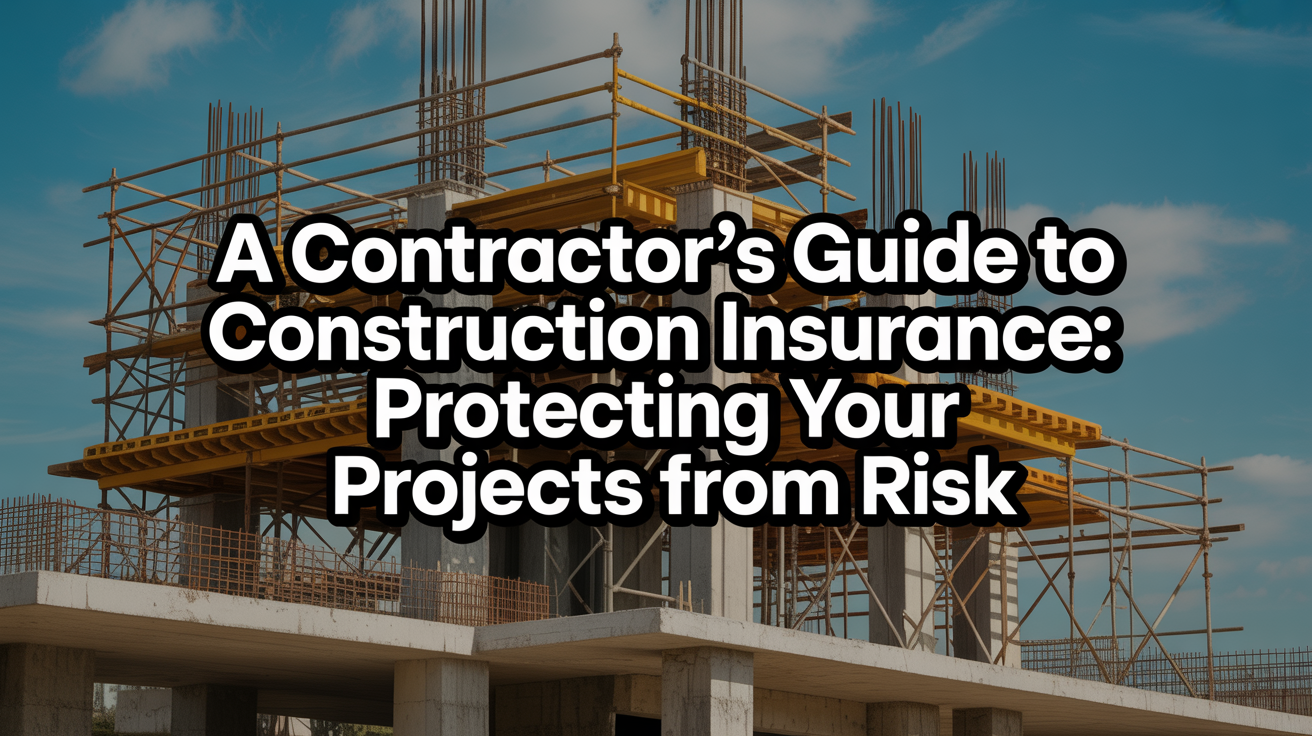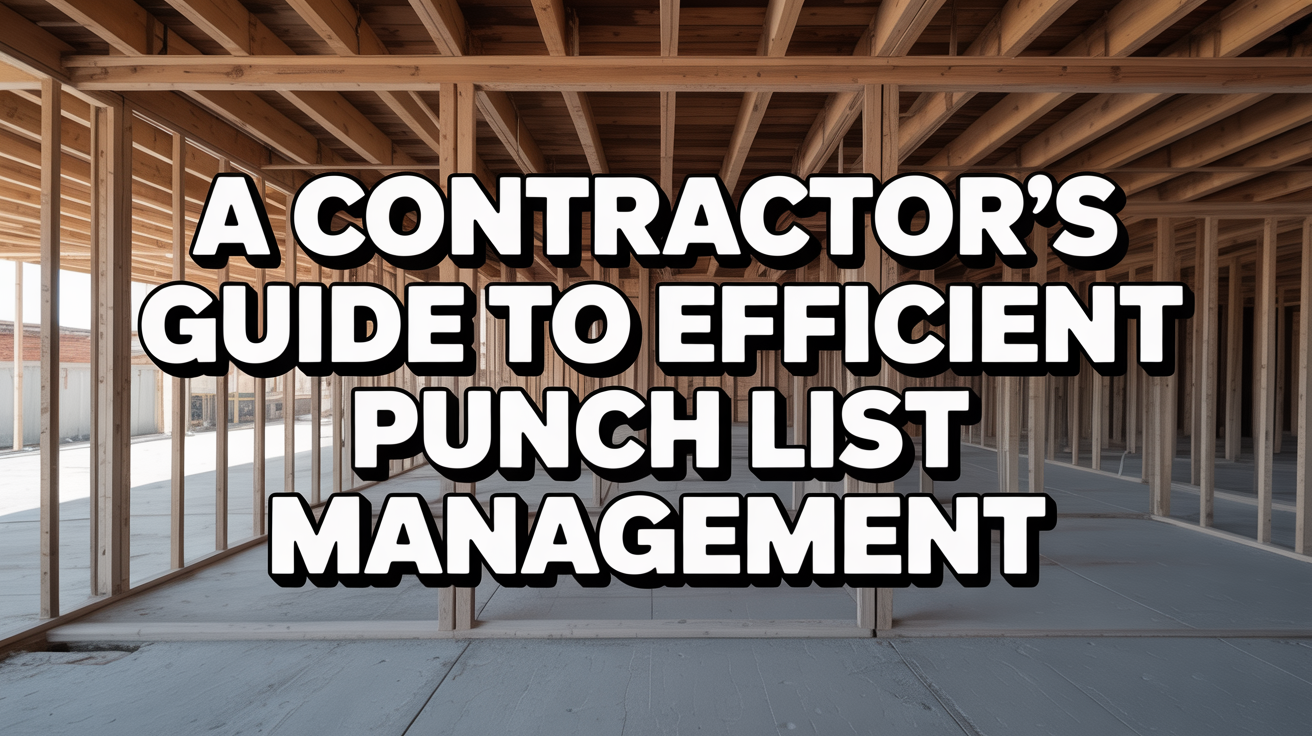A Contractor’s Guide to Construction Insurance: Protecting Your Projects from Risk
Introduction
Construction projects are exciting but come with numerous risks, including accidents, property damage, and unforeseen delays. Without proper insurance, contractors could face devastating financial consequences that might jeopardize their business. That’s why understanding construction insurance is essential for anyone in the industry. This guide will walk you through the types of coverage available, how to assess your needs, and why having the right policies is key to protecting your projects. 🛠️
From small home renovations to large commercial builds, every project has unique risks. By the end of this guide, you’ll have a clear roadmap for safeguarding your work and ensuring compliance with legal and contractual requirements. Whether you’re a seasoned contractor or just starting out, this information will help you make informed decisions about your insurance needs. Let’s dive into the basics of construction insurance and its purpose. 👷♂️
Understanding Construction Insurance: Definitions and Purpose
Construction insurance is a specialized type of coverage designed to protect contractors and their projects from potential risks. Its primary purposes include mitigating liabilities, ensuring compliance with regulations, and providing financial protection against unexpected events. For example, if an accident occurs on-site or a natural disaster damages materials, insurance can cover the costs instead of leaving you to foot the bill. 💼
Every construction project, regardless of size, requires tailored coverage. Small contractors may need basic liability protection, while larger firms might require comprehensive policies covering multiple subcontractors and high-value assets. Understanding the scope of your responsibilities and risks is the first step toward securing the right coverage. Transitioning from definitions, let’s explore the key types of construction insurance every contractor should know. 🔧
Key Types of Construction Insurance Every Contractor Should Know
One of the most common types of insurance is General Liability Insurance, which protects against claims of bodily injury, property damage, and advertising injuries. This foundational policy is crucial for any contractor, as it covers third-party claims that could arise during a project. For instance, if a worker accidentally damages a client’s property, general liability insurance can handle the repair costs. 🏠
Workers’ Compensation is another essential coverage, especially for projects involving employees. It provides medical benefits and wage replacement if a worker gets injured on the job. Not only does this protect your team, but it also shields your business from costly lawsuits. Moving on, Builder’s Risk Insurance is specifically designed to cover buildings under construction, including materials and equipment stored on-site. 🏗️
Professional Liability Insurance, also known as Errors & Omissions (E&O), is vital for contractors offering design or consulting services. This policy safeguards against claims of negligence, mistakes, or omissions that could lead to project delays or financial losses. Each of these insurance types serves a unique purpose, and understanding them ensures you’re not caught off guard by unexpected risks. 📋
By now, you’ve seen how diverse construction insurance can be. However, some projects may require even more specialized coverage. Let’s take a closer look at niche policies like pollution insurance and umbrella/excess coverage. 🌡️
“Key types of construction insurance include General Liability, Workers’ Compensation, Professional Liability, and Builder’s Risk Insurance, each known for its specific coverage offerings.” -The Allen Thomas Group
Specialized, Excess, and Single-Project Insurance Options
For projects involving hazardous materials or environments, specialized insurance like pollution liability becomes critical. This coverage protects against claims related to environmental damage, such as spills or contamination. Similarly, umbrella or excess liability policies provide additional protection beyond the limits of standard policies, which is ideal for large-scale or high-risk projects. 🚧
Single-project insurance is another option, offering tailored coverage for specific jobs. This is particularly useful for one-off contracts with unique risks or requirements. By exploring these specialized options, contractors can ensure they’re fully protected, no matter the complexity of the project. Next, we’ll delve into how state, local, and contractual regulations influence insurance needs. 📜
State, Local, and Contractual Insurance Requirements
Insurance requirements can vary significantly depending on where you operate. Some states mandate specific coverages, such as workers’ compensation or general liability, while others leave it up to local ordinances. Additionally, contracts often include clauses outlining minimum insurance thresholds, which contractors must meet to qualify for the job. Knowing these rules is crucial to avoiding penalties or disqualification. ⚖️
For example, a large commercial project might require higher liability limits than a residential remodel. Contractors should always review contract terms carefully and confirm compliance with applicable laws before signing agreements. Failure to do so could result in fines or even project shutdowns. Now that we’ve covered regulatory requirements, let’s discuss how to assess your project’s risks and match them with appropriate coverage. 🎯
Risk assessment is a proactive step that saves time and money in the long run. By identifying potential hazards early, you can secure the right insurance products to mitigate those risks effectively. This process involves evaluating factors like project size, location, and subcontractor involvement. 🔍
How to Assess Your Project’s Risks and Coverage Needs
The first step in assessing risk is analyzing the nature of your project. Are you working on a high-rise building or a simple home renovation? Larger projects typically involve more subcontractors, expensive equipment, and hazardous materials, all of which increase risk exposure. Understanding these variables helps you determine the level of coverage needed. 🏢
Next, consider external factors like weather conditions, site accessibility, and local crime rates. These elements can impact the likelihood of theft, damage, or delays. Consulting with an experienced insurance professional can provide valuable insights and ensure you don’t overlook critical areas. Finally, remember that risk assessment isn’t a one-time task-it should be revisited regularly as projects evolve. 🔄
“Construction insurance compliance is the practice of ensuring that construction projects adhere to legal and regulatory requirements regarding insurance coverage.” -The Allen Thomas Group
With a clear understanding of your risks, you can now focus on matching insurance to your business size and scope. Let’s explore how coverage needs differ for small, medium, and large contractors. 📊
Tiered Coverage: Matching Insurance to Contractor Size and Business Scope
Small contractors often benefit from Business Owner Policies (BOPs), which bundle general liability and property insurance at a lower cost. As businesses grow, their insurance needs become more complex, requiring additional coverages like workers’ compensation and builder’s risk. Medium-sized firms may also need higher liability limits to accommodate larger projects and teams. 🏭
Large contractors, on the other hand, typically require customized solutions that address their unique operations and scale. Flexibility and open communication with insurance carriers are key to tailoring coverage that evolves with your business. With this foundation laid, let’s clarify the distinction between insurance and surety bonds. 🤝
Bonds vs. Insurance: What’s the Difference and When Are Both Required?
While insurance policies protect against risks and liabilities, surety bonds serve as a guarantee that a contractor will fulfill their contractual obligations. Bonds are often required for public projects or when working with government entities, while insurance is generally mandatory for all construction work. Understanding the difference ensures you’re prepared for both scenarios. ✅
In some cases, contractors may need both insurance and bonds to comply with project requirements. For example, a highway construction contract might demand a performance bond alongside general liability insurance. Now that we’ve clarified this distinction, let’s move on to choosing the right providers and products. 🏆
How to Choose Insurance Providers and Products
Selecting the right insurance provider starts with finding an agent experienced in construction risks. Specialty brokers can offer tailored advice and access to policies designed specifically for contractors. Comparing multiple quotes ensures you find a plan that balances cost, coverage, and compliance. 💼
Avoid common mistakes like underinsuring or overlooking policy exclusions. Thoroughly review each option and ask questions to fully understand what’s included. With the right provider, you can confidently move forward knowing your projects are protected. However, even the best plans can have gaps-let’s examine frequent oversights and how to avoid them. 🕵️♀️
“Dive into the essentials of insurance for construction companies, covering risks, types of policies, costs, surety bonds, and how to choose …” -Hotchkiss Insurance
Common Coverage Gaps and How to Avoid Them
One common oversight is failing to insure tools and equipment, which can be costly to replace if stolen or damaged. Another gap is assuming subcontractors carry sufficient coverage, leaving you exposed to liability if they don’t. Regular audits of your policies can help identify and address these vulnerabilities before they become issues. 🔧
Environmental risks, such as pollution or asbestos exposure, are also frequently overlooked. To avoid these pitfalls, consult with your insurance provider and conduct periodic reviews of your coverage. Proper planning minimizes surprises and keeps your projects running smoothly. Speaking of smooth operations, let’s discuss managing certificates, renewals, and claims efficiently. 📑
Managing Certificates of Insurance, Renewals, and Claims
Effectively managing certificates of insurance is crucial for maintaining compliance and avoiding disputes. Keep detailed records of all policies and ensure certificates are updated promptly when renewals occur. Timely renewals prevent lapses in coverage, which could jeopardize your projects. 📅
When filing claims, act quickly and provide thorough documentation to minimize delays. Efficient claims management not only resolves issues faster but also strengthens your relationship with insurers. With administrative tasks covered, let’s explore how insurance impacts project budgeting. 💸
Construction Insurance and Project Budgeting
Insurance premiums are a necessary expense that should be factored into your project budget from the start. Underestimating these costs can lead to cash flow problems later on. To balance coverage and expenses, consider bundling policies or negotiating terms with providers. 💡
For contractors managing multiple projects, spreading insurance costs across jobs can help maintain financial stability. By planning ahead and incorporating premiums into your budget, you can ensure adequate protection without compromising profitability. Now, let’s tackle some frequently asked questions about construction insurance. ❓
Frequently Asked Questions: Construction Insurance for Contractors
What types of insurance are legally mandatory for contractors? Workers’ compensation and general liability insurance are often required by law, depending on your location and project type.
How do I determine the right coverage limits for my project? Assess the project’s size, value, and risks, and consult with an insurance professional to set appropriate limits.
Are subcontractors required to carry their own insurance? Yes, subcontractors should have their own coverage to protect themselves and reduce your liability exposure.
Does builder’s risk insurance cover completed buildings? No, builder’s risk typically only covers structures during construction; separate property insurance is needed afterward.
What should I do if my insurer denies a claim? Review the denial letter, gather supporting evidence, and appeal the decision or seek legal advice if necessary.
Conclusion
In conclusion, construction insurance is a vital tool for managing risks and ensuring the success of your projects. From understanding the different types of coverage to navigating state regulations and contractual requirements, being well-informed empowers you to make smart decisions. Proactive risk management not only protects your business but also enhances your reputation as a reliable contractor. 🏆
To safeguard your projects and achieve long-term success, consult with insurance professionals who specialize in construction risks. Regularly review and update your policies to stay ahead of changing needs and regulations. Remember, knowledge of insurance types, compliance requirements, and risk assessment is fundamental to thriving in the construction industry. Don’t wait-take action today to protect your projects with the right mix of coverage! 🚀



